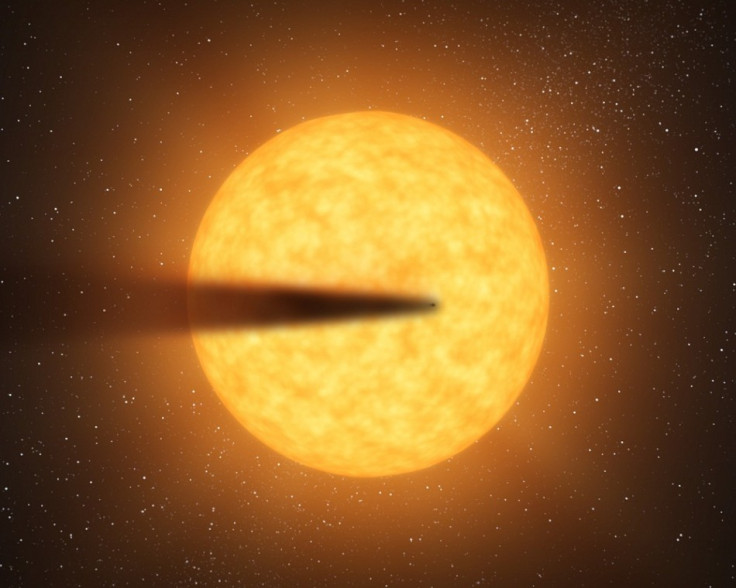Nasa Space Telescope Captures Planet Disintegration

Astronomers from Nasa and the Massachusetts Institute of Technology (MIT) have detected a possible planet disintegrating under the searing heat of its host star, which is located 1,500 light-years from earth.
Astronomers also found that this planet-like candidate has a dusty tail just like the debris-trailing comet. They claim that the tail will not last long. Scientists calculate that, at the current rate of evaporation, the dusty world or the planet could be completely vaporised within 200 million years.
Astronomers detected this planet-like candidate when they identified an unusual light pattern emanating from a star named KIC 12557548. Nasa's Kepler space telescope detects planets and planet candidates by measuring dips in the brightness of more than 150,000 stars to search for planets crossing in front, or transiting their stars.
"The bizarre nature of the light output from this star with its precisely periodic transit-like features and highly variable depths exemplifies how Kepler is expanding the frontiers of science in unexpected ways," said Jon Jenkins, Kepler co-investigator at the SETI Institute in Mountain View, in a statement. "This discovery pulls back the curtain of how science works in the face of surprising data."
The study revealed that this planet-like candidate orbits around a star named KIC 12557548. KIC 12557548 is smaller and cooler than our sun; the planet candidate completes its orbit in less than 16 hours making it one of the shortest orbits ever detected.
At an orbital distance of only twice the diameter of its star, the surface temperature of the planet is estimated to be a smouldering 3,300 degrees Fahrenheit.
According to the scientists, the star-facing side of the potentially rocky inferno is an ocean of seething magma. The surface melts and evaporates at such high temperatures that the energy from the resulting wind is enough to allow dust and gas to escape into space. This dusty effluence trails behind the doomed companion as it disintegrates around the star.
Additional follow-up observations are needed to confirm the candidate as a planet, says Jenkins.
© Copyright IBTimes 2024. All rights reserved.





